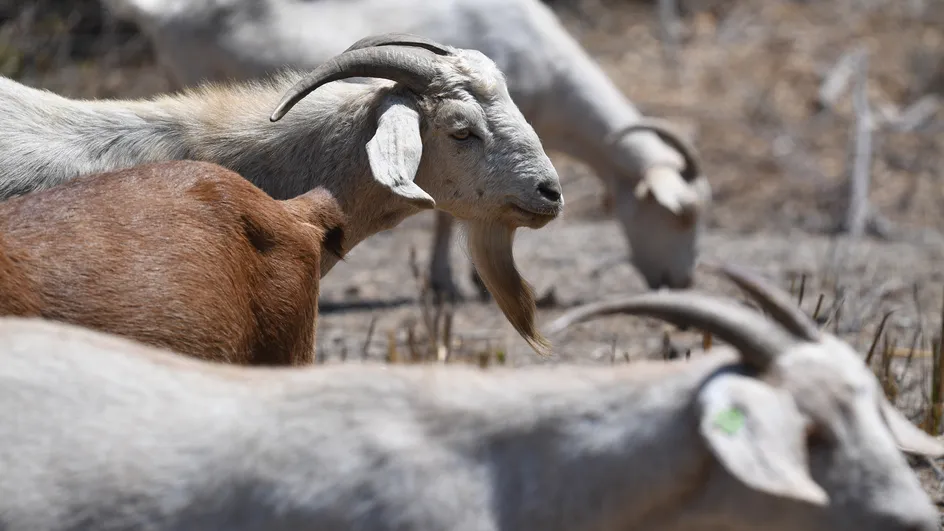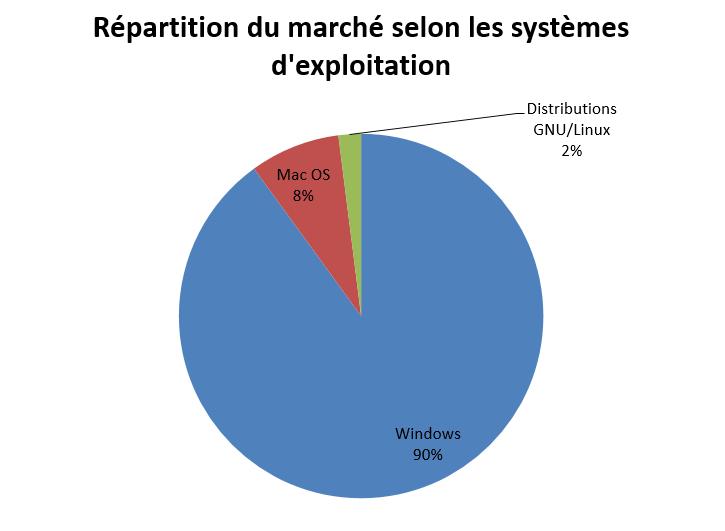Why is fashion among the worst polluters in the world?
This article is part of a series on fashion, its history and its mechanisms.
All the episodes are available on the blog site The Third Baobab.
We have seen in previous episodes the psychological and social reasons that lead us to like (or not) fashion. And always wanting more!
So now we can finally talk about the consequences of all this. Because such a passion is not without environmental consequences.
When you think about it, you can't really be surprised by the environmental problems caused by fast fashion. It is an “anti-ecological” industry by nature. It relies entirely on cheap and disposable clothes, with a very short lifespan due to their poor quality and fashion obsolescence.
And the environmental harms of fashion do not stop at the manufacture of clothing: it is the entire life cycle of a garment that must be taken into account!
It is not only about manufacturing (production of textile fibers, treatments, dyes, and assembly of fabrics), but also about the use of the garment (including washing), then its end of life.
And there is very rarely any question of recycling. To be clear, the vast majority of our clothes end up in the trash.
As a result, the environmental impact of fashion is far from negligible! Activist blogs and media often relay a study by the Danish Fashion Institute according to which fashion is the second most polluting industry in the world, just behind the oil industry.
But I would like to point out that I have not managed to get my hands on the original source, that is to say the scientific article which would have been issued by the Danish Fashion Institute: which means that I did not have access to the calculation methods.
So I looked elsewhere for numbers. Only, they vary a lot depending on the sources, which are not always very reliable. On greenhouse gas emissions, for example: the fashion industry represents between 3% and 10% of total CO2 emissions. The difference can obviously be due to the calculation methods but also, I think, to the blurred contours of the industry and the multitude of intermediaries which confuses the issue.
The most important thing will therefore be to remember the mechanisms and the orders of magnitude in this journey through the life of a garment.
Come on, grab your prettiest boots, we're going to start by taking a walk in a cotton field!
Travel to the land of cotton
About 40% of our clothes are made from cotton. It is the most produced natural fiber in the world.
On the other hand, if you expect a pleasant country trip, I will immediately destroy your ambitions. Because cotton is also the most polluting crop in the world.
Cotton is a tropical plant, meaning it needs a lot of heat, sun, and water. Conditions that insects, fungi and viruses also love. Unfortunately, cotton is a fragile plant that is easily attacked.
So farmers use pesticides. Lots of pesticides. A quarter of all the pesticides used in the world are dedicated to the cultivation of cotton. It's absolutely huge.
For harvesting, cotton is often sprayed with a defoliant (which causes the leaves to fall off) to separate the leaves and fibers. It is obviously an extremely toxic product.
Today, more than 80% of the cotton in the world is BT cotton, that is to say GMO cotton which produces an insecticidal protein. This kind of GMO is supposed to reduce the use of pesticides.
However, GM cotton is not always a success story for farmers and the environment.
Contrary to Monsanto's promises, GMO cotton grown in India and Pakistan needs more and more pesticides because of the emergence of resistant predators.
In India, GM cotton has not fulfilled its promise of yields and has ruined a large number of farmers, driving some to suicide.
In Burkina Faso, GMO cotton sold for much less than normal cotton because its fibers were of too poor quality, which led to big financial losses for farmers and cotton companies.
Cotton, GMO or not, is also very thirsty: it is the third biggest consumer of irrigation water in the world, after rice and wheat. Especially since it will then be necessary to add the liters of water necessary to bleach the cotton (usually with chlorine) and to dye it (with products containing heavy metals).
Cotton monoculture in Uzbekistan is a textbook case since in addition to polluting waterways with pesticides, it emptied the Aral Sea by more than 80% between 1960 and 2000!
According to Greenpeace, the production of a single cotton T-shirt requires an average of 2700 liters of water. This is the amount of water you drink in… two and a half years!
The estimate goes up to 7000 liters for a classic pair of jeans (because jeans are mostly cotton). However, each year around 2 billion pairs of jeans are sold in the world; I'll let you do the math.
14 trillion liters. It's a lot.
Of course, there is also organic cotton. It avoids pesticides and saves some water. It still represents less than 1% of the world areas intended for cotton production, but it is bound to develop since it would seem that demand (from brands) is greater than supply (from producers ). Nevertheless, organic cotton does not necessarily escape other chemical treatments (washing, dyeing, etc.).
Good. Cotton production is not fun. Why don't we take a look at other materials to see if there's something better elsewhere?
Soft as a lamb
You probably own wool sweaters or scarves. It's warm, it's soft, sometimes it stings the skin a little.

But wool, it also hurts the environment.
For those who missed the information, wool comes from animals. Just to produce raw wool, you need a lot of natural resources for animal husbandry (food and water for the animals, energy, areas of land from deforestation) and for washing ( 12 liters of water for 1 kg of raw wool). The treatment of wool requires polluting products which are then difficult to filter.
To say how polluting it is, the majority of industrialized countries prefer to import pre-washed wool rather than doing it themselves! That way, we leave the pollution elsewhere.
Even the major wool producers of Australia and New Zealand export their wool to Asia to be washed there. Because for that, it is better not to be too demanding in terms of environmental regulations…
That said, wool is a natural fiber that is easily reusable, recyclable and biodegradable (it's better if it hasn't been dyed). In addition, it does not need any fireproof treatment since it is a natural flame retardant. Attention fire eaters!
Okay, and apart from that, what else do we have in stock?
Petroleum and Pulp
Man-made fibers are textile fibers that are not naturally occurring. Yes, well, you probably guessed it.
To be clear, textile fibers are generally classified into three categories: natural fiberswhich are directly produced by nature (cotton, wool, silk etc), artificial fibers which are produced from processed natural products (viscose, wood fibers), and synthetic fibers obtained from petroleum or coal (polyester, polyamide, acrylic, etc.) .
As for artificial fibers, the cellulose of various plants (especially wood) is transformed with a chemical process. These fibers can therefore be obtained with relatively easy to find resources, such as wood pulp.
Unfortunately, artificial fibers clearly do not save chemicals. In terms of dyeing and finishing, the pollution caused would be comparable to that of cotton.
Greenpeace campaign, photos Lance Lee
As for synthetic fibres, they generally come from petroleum (I insist on this). Among them is elastane (also called Lycra), which is often mixed with cotton in jeans for more flexibility and elasticity. Appeared in the 1930s, synthetic fibers are today the most widely used textile fibers in the world.
But it is certainly not for their ecological aspect! The industrial processes used to produce these fibers are extremely polluting, and the fabrics are not biodegradable. Some dyes and additives can even be harmful to the health of the wearer.
But tell me, this story is still rotten! Is there good news anywhere?
Hemp is high
And flax too!
We're going back to natural fibres. Flax fiber was one of the first textiles made by humans several thousand years ago.
Flax and hemp are plants that need a fairly precise climate that few countries have. But that's good, we're part of it!
“Why is this good? To get rid of all the pollution?!”
Nah! Flax and hemp are relatively clean and environmentally friendly crops. They are easy to grow, they don't need a lot of water, and they require very little fertilizer or pesticides. In addition, it is a local culture very much from home. Bingo!
Small problem however: the treatment of fibers can require a certain amount of water and chemicals. But of all textiles, linen and hemp are among those with the lowest environmental impact.
According to the European Flax and Hemp Confederation, France is today the world leader in flax. At least for that, we have the gold medal guys!
And hemp cultivation could still have good development prospects in the northern part of France and in Belgium. The only “problem” is that the cultivation of hemp is highly regulated because of its narcotic properties…
“We have traveled the paths, we have gone the distance”
Okay, I will pass on to you the exhaustive list of all the existing textiles on the surface of the Earth.
But now that we have looked at the production conditions of the most used textiles, we can move on to the next step. Because they won't turn into T-shirts, bermuda shorts or pencil skirts on their own! They have to be sent to assembly plants. This is the transport stage.
And how do we get them from one end of the world to the other? By cargo or by plane. And how do we move cargo and planes forward? With oil! (No, no, I never take you for idiots.)
According to the French Environment and Energy Management Agency (ADEME), a pair of jeans can travel up to 65,000 km between the cotton field and the store, i.e. once and half around the Earth! It is therefore possible that your jeans have traveled a lot more than you.
The transport of our clothes therefore emits huge amounts of greenhouse gases. Which is very bad for the climate, of course. Allow me to quickly recall that climate change is one of the greatest threats to humanity in the 21st century.
So the next time you set foot in a fast fashion store, at least have a little thought for the polar bears!
Because fast fashion, which supplies its stores several times a week, rely relies entirely on abundant and inexpensive fossil resources. Obviously, this model is not “sustainable”.
In the washing machine, Régine!
Speaking of energy, there is a part of the life cycle of clothing that we tend to underestimate: washing it!
And that is our personal responsibility.
You have to be very careful about the washing conditions of the clothes. You know, the instructions that are written on the label.
So yes, I know, I promised you I wouldn't think you were stupid. But it is very serious. If you don't take care of fabrics, and especially fragile fabrics, it can drastically reduce the life of your clothes. Which may force you to replace them sooner than expected.
The electric dryer, for example, is rarely the friend of your clothes. It can irreparably damage their fibers, and in addition it consumes a lot of energy.
Long live free drying!
As for the washing machine, it should be remembered that it is the heating of the water that consumes the most. This is why washing at 90°C consumes 3 times more electricity than washing at 30°C.
Not to mention the detergent, whose chemical components can not only deteriorate the fibers, but also irritate the skin, and pollute the water used. However, there are detergents that are relatively respectful of health and the environment; I'll talk about it in the next episode.
The washing machine stage is a rather particular problem for synthetic fabrics. During washing, a large amount of plastic microfibers can be discharged into the waste water. Unfortunately, wastewater treatment plants are unable to filter most of these microfibers, which therefore end up in rivers and oceans.
The moral of the story is that we must not forget that a garment continues to have an environmental impact long after its manufacturing phase.< /b>
ADEME estimates that the use phase and end of life of jeans are responsible for half of the greenhouse gases emitted during their entire life cycle.
A good deed?
Precisely, the end of life of the garment, let's talk about it. If you're a charitable soul, you'd probably rather donate your old clothes to charity than throw them away. That's commendable, but not nearly as perfect a solution as you might imagine. .
It is in any case a very popular solution. In 2013, the French would have deposited nearly 200,000 tonnes of used clothing in collection containers, including 100,000 tonnes in those of Relais, a cooperative member of the Emmaüs Network.
Some containers also display the logo of the Restos du Coeurs, the Red Cross or the Secours Catholique, but you should know that the clothes you put in them will not necessarily go to these associations. Often, collection companies like Le Relais simply donate money to these associations in exchange for the use of their name and image. So better to know!
If you want to be sure that your clothes benefit an association, it is better to bring them directly on site.
As for the clothes collected by the Relay, those that are in good condition are resold in the Ding Fring shops, which belong to it. But resale in stores would only concern 6% of the clothes collected. Yes, only 6%! So what happens with the remaining 94%?
The Relay is relatively transparent on this. More than half of the clothes are in fact sold by the ton and exported. In general, to Africa. And here we go again: our clothes are going to the other side of the world with fossil fuels!
Second-hand clothes began to be exported to Africa in the 1980s after the protectionist policies of a number of African countries stopped. Since these clothes are not expensive, they flooded the market.
According to a report by the NGO Oxfam (2005), this trade has created hundreds of thousands of jobs. But these are mostly informal jobs (i.e. “black”), in the sale and repair of second-hand clothes. At the same time, the importation of all these clothes has completely stifled local textile production, which has eliminated a lot of formal jobs in crafts.
As this documentary by Envoyé Spécial reveals, African importers cannot always choose what they receive: they buy bundled batches of clothing. And in these batches of clothes, many textile pieces are ultimately neither resalable nor reusable (the journalists specify that these clothes come from a French collection company but that it is not the Relais). And since African retailers can't do anything with them, they throw them away… That's how an (untold) part of our clothes ends up ingarbage dumps in Africa b>.
And we who thought we were preserving the environment and helping our neighbours!
The problem is that we produce far too many second-hand clothes and there are "not enough" people in need in our community to absorb all this waste ! In addition, fast fashion clothes are so inexpensive that second-hand clothes are no longer so advantageous… At this price, you might as well buy new at Primark or H&M.
And then you have to look at them too, these clothes that you get rid of: a huge part comes from fast fashion brands. These are clothes whose quality is so poor that associations and thrift shops can't get anything out of them. No one will want to buy them!
This is a big problem for associations in particular. We think we're helping them by giving them our old clothes, but in reality we're suffocating them under tons of worthless clothes. With fast fashion, associations are wasting more and more time (and therefore money!) sorting through all these clothes they can do nothing about.
So, maybe we can recycle them?
New textile for a new life?
Things are even more complicated.
Of the clothes collected by the Relais, 10% become rags and 26% are recycled into insulating materials for buildings or automobiles. Which is already honorable.
According to the head of sustainable development at H&M, only 0.1% of old clothes collected by organizations similar to the Relais are recycled to make new textile fibers
Bad will? It's mostly because we don't know how to do it!
Anyway, not yet.
What we know how to do well is recycle 100% cotton clothing. It’s relatively easy, since you can break them down and reweave them. Unfortunately, this is very difficult when the cotton has been dyed (you have to recycle the different colors separately), and impossible when the cotton has been treated, or mixed with other materials. Which it is… practically all the time.
Natural fibers such as cotton, linen, silk or wool can also be recycled thanks to machines that lacerate the fabrics. But the textile fibers obtained are of poor quality. As a result, you still have to mix them with “virgin” fiber to be able to make a new garment.
As for synthetic fibers, their recycling requires an apparently very advanced and extremely expensive technology. So it is not profitable.
And then when the fabric is a mixture of natural and synthetic fibers, it is completely impossible at the moment!
Okay, I'm going to cross recycling off my list… what's left now?
Onward to the discharge!
“Oh no, not her!”
Yes. Sorry.
This is where the vast majority of our clothes end up, I can't lie to you.
In this survey by Basta! magazine, we can read that Basse-Normandie generates around 13,500 tonnes of textile waste per year, of which 11,500 tonnes end up in the recycling center or incinerated, i.e. 85%. I guess the numbers are not radically different in the rest of France.
But the life cycle of clothes is not over yet! Because that part of the cycle can last a long time. Long time. And even thousands of years in the case of synthetic fibres…
In the end, the clotheswill stay in the landfill much longer than they were worn! And this is obviously very bad for the environment.
Treated, dyed or printed fabrics (i.e. the overwhelming majority of our clothes) can be very harmful since they contain a cocktail of chemicals.
When incinerated, these garments release dangerous toxins into the air.
When they are not, they risk spreading chemicals into waterways. A heavy rain on the garbage can be enough to carry the toxic substances very far by runoff.
Then the fibers will break down. But the process lasts several centuries, even several millennia for synthetic fibers. Better to be patient...
On the other hand, it is much faster for natural and artificial fibers (those made from vegetable cellulose). But the problem is that, like all organic waste, its biodegradation releases methane, a very powerful greenhouse gas.
In the end, the management of textile waste costs the community a lot of money. It is not only necessary to transport them to the landfills, but also to ensure the safety of the infrastructures so that the chemicals do not spread everywhere and, if not, to finance depollution projects, to pay for the care of the contaminated people …
This is called externalized costs: it is a price that you do not see on the label when you buy a garment but that you will pay more later in one way or another through taxes, levies, or a deterioration in our quality of life. In the end, you don't get such a good deal when you buy fast fashion clothes.
Especially since a significant part of the pollution takes place in the Asian countries that produce our clothes. When we buy fast fashion at ridiculous prices in the West, we leave them most of the bill.
But what can we do then?
The answer in the next episode!
This article was written by Alexandra d'Imperio.
Go to the Third Baobab website or the Facebook page to find out more!







